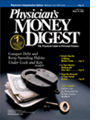Publication
Article
Physician's Money Digest
Guillotin: Caught Up in a Twist of Fate
Author(s):
History is filled with injustice. Oneof the more blatant exampleswas the Reign of Terror, a point inthe French Revolution that earned its namewith its bloody guillotine, known by itscontemporaries as "the widow." But here,the name doesn't quite fit. The guillotinewas neither invented by nor used on itsnamesake. In fact, Joseph-Ignace Guillotin,MD, was opposed to the death penalty, butin a cruel twist of fate, the mass executionmachine has immortalized his name.
Medicine and Politics
Dr. Guillotin was a respected physicianand politician. Initially interested in thearts, he became professor of literature atthe Irisnah College at Bordeaux. He proceededto study medicine at Reims, wherehe graduated in 1768. Two years later, hegraduated from the University of Paris.Years later, he founded the FrenchAcademy of Medicine.
He also tried his hand in politics. Dr.Guillotin was named one of 10 deputies toFrance's Assemblée Constituante.
In this assembly, on Dec 1, 1789, a compellingspeech Dr. Guillotin delivered foreveraltered his name. He argued that capitalpunishment should be inflicted as speedilyand painlessly as possible, for all citizens,and argued for a machine designed for thisend. At the time, very inhumane forms ofcapital punishment were used, includinghanging and drawing and quartering.However, nobles could pay to have a morecivilized execution.
Dr. Guillotin proposed using a contraptionthat could decapitate people quicklyand precisely. Such machines had beenused throughout Europe since 1286.Several experts, headed by Dr. AntoineLouis, secretary of the Surgical Academy,developed the guillotine's design.
Dr. Guillotin thought this would segueinto the eventual elimination of capitalpunishment. A law was passed in 1791 thateveryone condemned to death in Franceshould be decapitated. What ensued wasthe notorious bloodshed of the FrenchRevolution (1789-1799).
The next year, the first of thesemachines—originally called "la louisette"after its true creator—was put up in Paris.The first executed was a highwayman, tobe followed by many other criminals of thestate, including King Louis XVI and QueenMarie Antoinette. Dr. Guillotin's colleagueAntoine Lavoisier, the brilliant French scientistwho discovered oxygen, found himselfin the widow's embrace. Dr. Guillotinhimself had a near miss. An executedfather had written him a letter, entrustingthe care of his wife and children to the doctor.That landed him in jail.
History Book Endings
By 1799, the guillotine had choppedmore than 15,000 heads (40,000 werekilled during the Revolution). Modern neurophysiologylater confirmed that a headsevered by a guillotine maintains brief consciousness.The execution was quick, butnot entirely painless.
The guillotine continued its streak offame in Greece, Switzerland, and NaziGermany. Its last deadly stroke fell inMarseilles, France, in 1977.
Eventually, Dr. Guillotin was freed fromprison. In 1805, he became the president ofthe committee for vaccinations in Paris. Thename association so embarrassed his family,they requested that the governmentrename the device. Denied this, the familychanged its own name.
